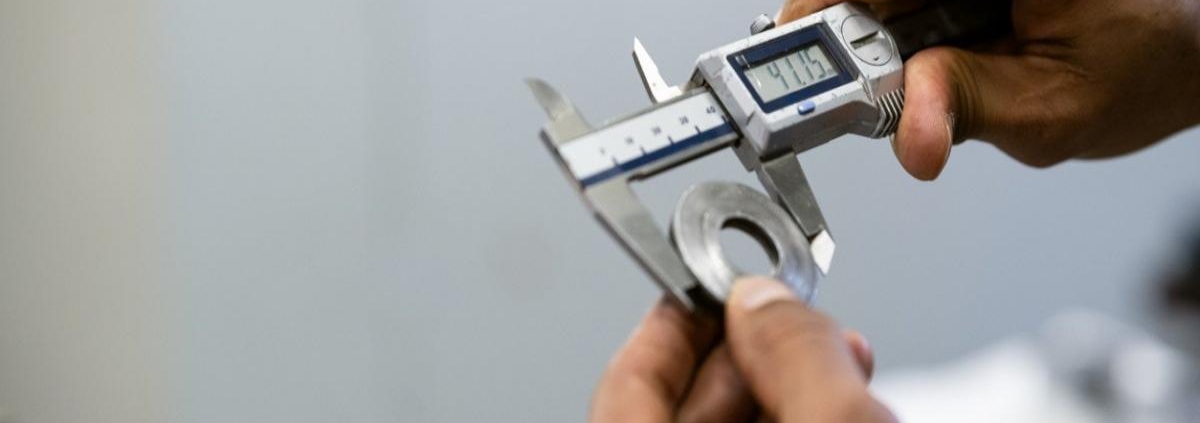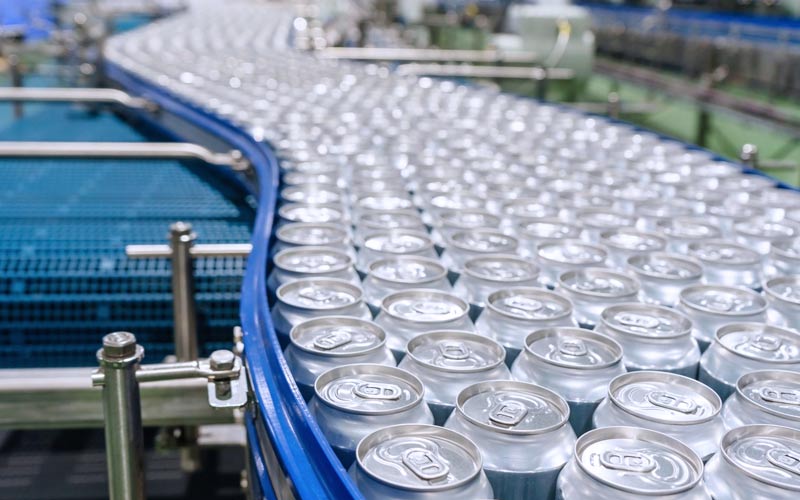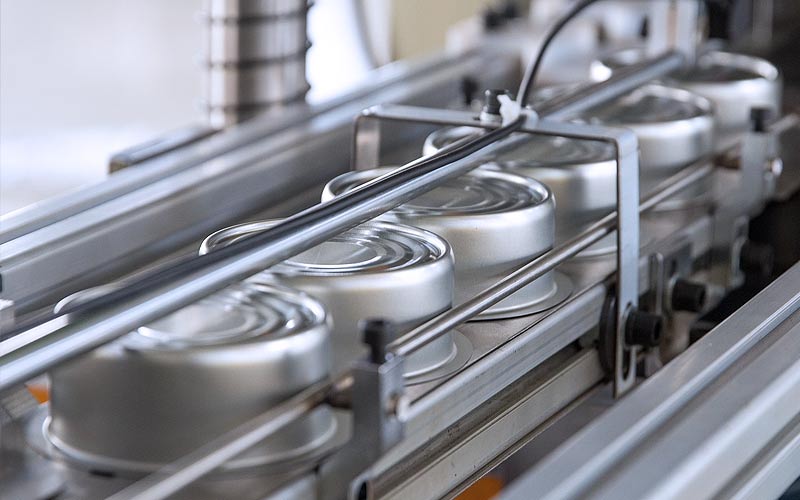How can you ensure dimensional accuracy as a custom tin can manufacturer?
To ensure the dimensional accuracy of tinplate and custom tin cans, most custom tin can manufacturer use fully automated production lines. Dimensional variations can be reduced by more than 80% through the use of automated production. In Tsing’s tin can production shop, all automated stamping processes (punching, bending, trimming, and punching) are run on CNC-controlled equipment. Utilizing this automation reduces cycle time by 30%, minimizing human error and variation. By automating key steps, our tinplate box factory achieves tight tolerances (±0.1 mm) on can diameter, height, and lid fit. This approach not only improves labor productivity but also reduces scrap rates and production costs, maintaining consistent dimensions for thousands of units per shift.
Custom Tin Can Manufacturer Using Precision Tools and Dies
Precision tools are fundamental to any custom tin can manufacturer, and we use high-grade steel tools polished to a Ra 0.4 µm surface finish to achieve crisp edges and precise bends. In addition, we perform tool maintenance every 500,000 cycles. Meanwhile, our tooling engineers implement predictive maintenance programs using vibration and thermal sensors to detect tool wear early. Additionally, we utilize laser-etched alignment marks on the dies and punches to ensure that each punching operation commences within a tolerance of ±0.05 mm. By strictly maintaining and calibrating the dies, we as a custom tin can manufacturer can provide consistent wall thickness, uniform edge curling, and precise lid engagement for each batch of products, which enhances product quality and customer confidence. Additionally, we maintain a tool inventory that includes spare kits, enabling immediate die replacement and preventing costly downtime while meeting tight customer delivery deadlines.
Custom Tin Can Manufacturer Using Automated Inline Inspection and Quality Control
Ensuring dimensional accuracy also requires a powerful inspection system. We install laser micrometers and high-speed vision cameras at multiple points along the production line to capture diameter, height, and seam dimensions in real-time. During production, we configure statistical process control software to flag any deviation exceeding ±0.1 mm, triggering automatic process adjustments or quality alerts. Additionally, an automated robotic pick-and-place arm is used to transfer suspect parts to a manual inspection station for confirmation and measurement. By integrating these in-line measurement tools, our tin box factory records the dimensional data of each can and associates it with the machine settings to maintain full traceability. This ensures rapid root cause analysis and continuous improvement. At the same time, we also arrange regular audits, using secondary gauge blocks and calibrated tin cans to verify that the in-line sensors meet the traceability standards.
Conduct process control and statistical monitoring
As a custom tin manufacturer with extensive experience, we have adopted a rigorous process management approach to maintaining tight tolerances. Therefore, we define key process parameters, including press tonnage, feed length, and press dwell time, and monitor them during each shift. Additionally, monthly capability studies confirm that Cp and Cpk values consistently remain above 1.67. At the same time, relevant personnel responsible for production conduct daily reviews, and operators analyze X-bar and R charts to detect trend drifts before they affect the dimensions. And the conversion procedure includes trial runs and dimensional acceptance by quality engineers to ensure parameter stability. By applying the SPC framework and documented SOPs, our custom tins minimize deviations and maintain consistent dimensional standards across all production batches.
Material Quality and Handling Standards
As a custom tin can manufacturer, we also ensure consistency in materials to ensure dimensional accuracy. We specify a tolerance of ±0.01 mm for tinplate thickness and require relevant suppliers to provide certificates for yield strength and surface finish. Additionally, we control the flatness of steel plates to within 0.05 mm over a 1-meter length. We also conduct a first-article inspection on incoming coils, measuring width, thickness, and coating adhesion. At the same time, the shop’s automated coil handling system minimizes human contact and reduces edge deformation when delivering materials to the punching machine. By controlling raw material characteristics and handling procedures, our tin box factory ensures that each blank enters the punching line with uniform geometry, laying the foundation for accurate final dimensions.
Environmental and Calibration Control
For custom tin can manufacturers, maintaining stable environmental conditions is the basis for ensuring dimensional accuracy. In addition to controlling the shop temperature (22 ± 2 °C) to prevent thermal expansion of the mold and metal, we also regulate the humidity at 45 ± 5% to avoid corrosion and metal deformation. We oversee the calibration schedule for all measuring equipment to ensure traceability by ISO 17025. Additionally, laser trackers verify press alignment on a weekly basis to correct for any mechanical drift that may occur. By strictly controlling environmental factors and ensuring calibration integrity, we consistently deliver tin cans that meet exacting dimensional specifications.
Ensuring Precision Dimensions
As a custom tin can manufacturer, we perform automated production, precision tooling maintenance, in-line inspection, material quality assurance, and system calibration. We use these best practices to achieve repeatable tolerances of ±0.1 mm over millions of units. By combining automation with a rigorous quality system, productivity can be increased to deliver consistently accurate custom tin cans.




 Facebook
Facebook Twitter
Twitter Linkedin
Linkedin